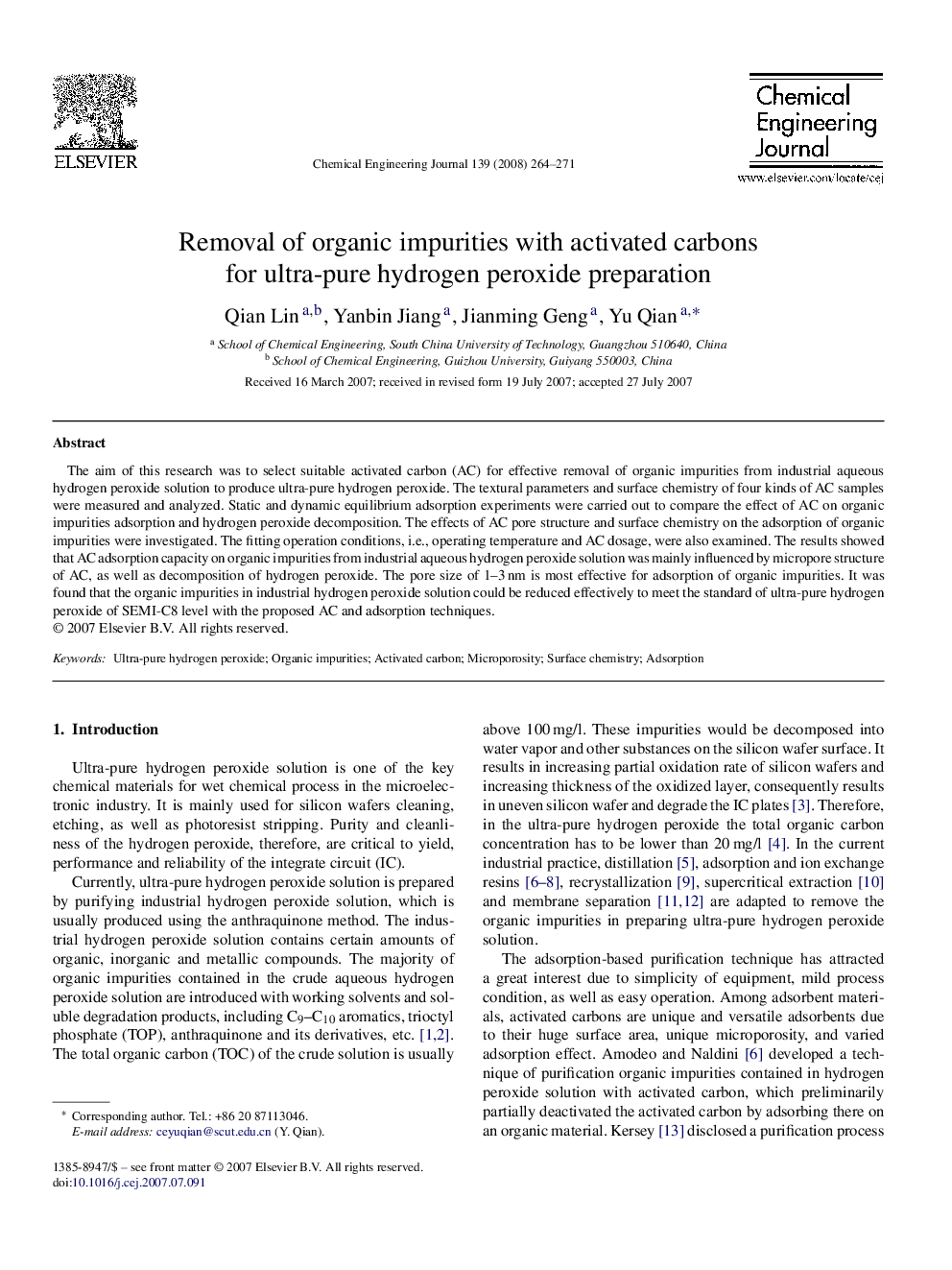| Article ID | Journal | Published Year | Pages | File Type |
|---|---|---|---|---|
| 153211 | Chemical Engineering Journal | 2008 | 8 Pages |
The aim of this research was to select suitable activated carbon (AC) for effective removal of organic impurities from industrial aqueous hydrogen peroxide solution to produce ultra-pure hydrogen peroxide. The textural parameters and surface chemistry of four kinds of AC samples were measured and analyzed. Static and dynamic equilibrium adsorption experiments were carried out to compare the effect of AC on organic impurities adsorption and hydrogen peroxide decomposition. The effects of AC pore structure and surface chemistry on the adsorption of organic impurities were investigated. The fitting operation conditions, i.e., operating temperature and AC dosage, were also examined. The results showed that AC adsorption capacity on organic impurities from industrial aqueous hydrogen peroxide solution was mainly influenced by micropore structure of AC, as well as decomposition of hydrogen peroxide. The pore size of 1–3 nm is most effective for adsorption of organic impurities. It was found that the organic impurities in industrial hydrogen peroxide solution could be reduced effectively to meet the standard of ultra-pure hydrogen peroxide of SEMI-C8 level with the proposed AC and adsorption techniques.
